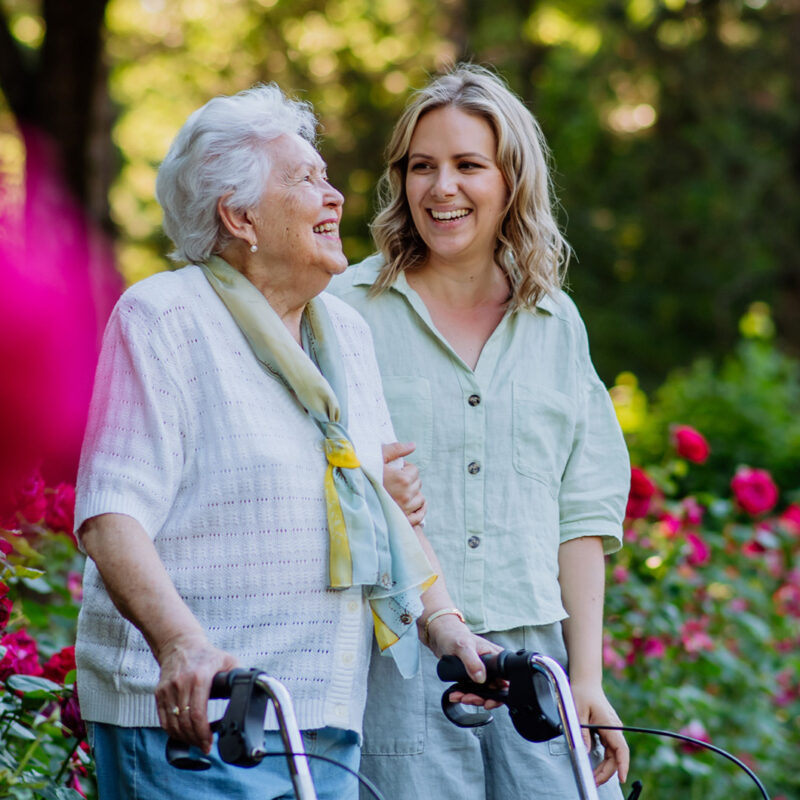Spending time outdoors is essential for healthy aging as it can help to slow cognitive and physical decline. For people living with dementia, who are particularly at risk for depression and social isolation, spending time outdoors can reduce aggressive behavior and stress, improve mood, sleep hygiene, and reduce use of medication.
Conversely, the absence of outdoor time leads to consequences including disability, fear, and depression, especially for seniors with dementia. As people living with dementia have a natural fear of going outside, it is even more critical to incorporate a safe and convenient outdoor space for memory care treatment. This is especially true for nursing homes, which statistically have a low rate of outdoor exposure for residents.
There are three key characteristics to designing outdoor space for skilled nursing residents.
Environmental Comfort
Mitigating adverse environmental conditions is an essential component of any memory care garden. Elements like glare and environmental conditions need careful management. Pavement color and shade placement will address glare issues, while covered walkways facilitate smooth transitions between indoor and outdoor spaces. Seating options and grab bars ensure navigational ease.
A covered walkway at the main entry to the garden can provide shaded access and a smooth transition into sunlight from the interior. Areas of shade and sun provide choice for residents with unique heat preferences. Solid table surfaces conduct sound waves across tabletops during social interactions.
Safety
Enabling features, such as varying seating types at frequent intervals and grab bars along walking paths, allow elders to feel a sense of comfort and safety in the garden area.
Visual and physical access that give caregivers clear views of the garden enhances autonomy and patient use. Elders’ time spent outdoors increases when program spaces are visually accessible from indoors. This transparency can improve safety while respecting residents’ dignity and autonomy.
Choice
Choice and inclusivity support residents with different social tolerance levels. Social spaces for interaction, semi-social areas for observation, and private zones for those who prefer solitude or may feel agitated are critical elements in the design of outdoor spaces for skilled nursing facilities.
Strategically designed view sheds and circulation paths will draw residents into and through the garden, encouraging exploration. Planting choices, fragrant species, and botanical labels engage multiple senses and help trigger memories. Integrating multisensory features like a facing glider swing and an integral sound can promote movement, sight, smell, and sound experiences.
Design features such as raised garden beds, a facing glider swing, and moveable tables, offer choices between shaded and sunny spots. Botanical labels and fragrant species evoke memories. Access and safety can be ensured through visual and physical access points, encouraging autonomous movement, and reducing the risk of people lingering in one area.
Conclusion
In conclusion, creating well-designed gardens for skilled nursing residents prioritizes comfort, inclusivity, and sensory engagement, particularly for residents living with Alzheimer’s or dementia. By providing diverse spaces, managing environmental conditions, and incorporating enabling features, garden spaces enhance residents’ well-being, autonomy, and social engagement.
